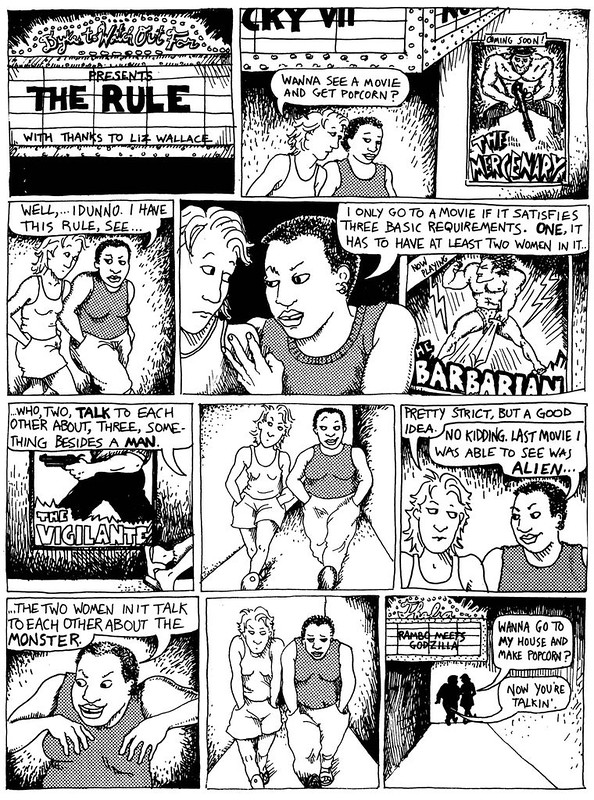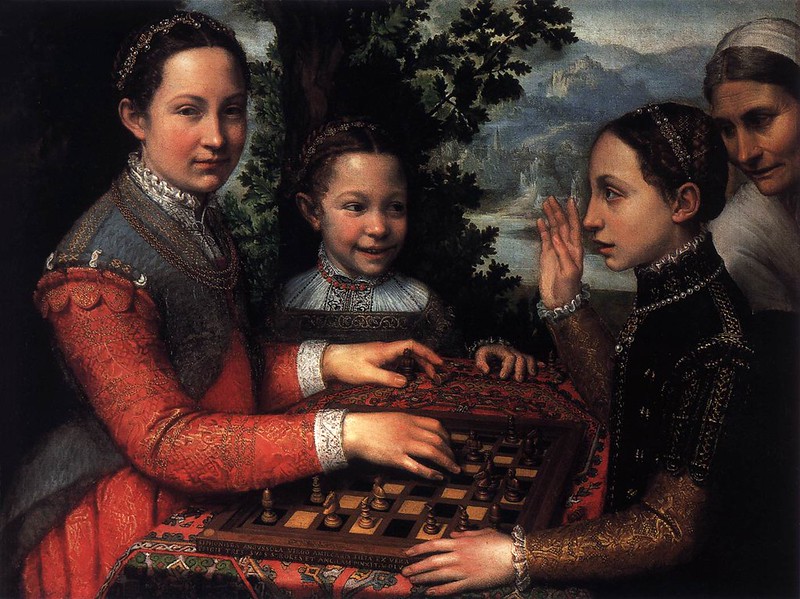Originally created by Alison Bechdel, the Bechdel test started as a joke in a 1985 comic strip called “Dykes to Watch Out For,” which featured two women discussing what to see at the movies. One of the women in the comic says she will only see a movie if it meets three requirements:
- There are at least two women in the film;
- The women have speaking roles;
- They speak about topics other than men.
These criteria have actually gone on to become the industry standard for measuring female representation in books, film, and on stage. They highlight the ways in which women were often relegated to supporting roles, while men took the lead.
The Effect of the Bechdel Test
When looking at female representation in films, numbers don’t lie. While women make up 51% of the US population, their representation in films continues to be inadequate, sitting at roughly 34% of speaking roles. Simultaneously, in the UK, only 39% of women play onstage roles. Furthermore, when actually putting the Bechdel Test into action, approximately 40% of movies fail – with 10% failing all three basic criteria for female representation. The most common culprits are movies in the action and drama genres.
While the Bechdel Test was a progressive step in 1980s terms, the test unfortunately now falls short of what it was intended to do. For example, the test does not require women to have their own opinions or talk about things other than fashion or makeup. Outside of talking about men, the female character is underdeveloped and not illustrative of the current female population (who care about things other than shoes and hair). Other shortcomings of the test include:
Characters require no development – this leads to tokenism and quota-filling.
- It praises appearance over content and often doesn’t emphasize the content at all. Is the female character empowering? Is the character covering feminist topics and concerns? Are women the drivers of their own story?
- It doesn’t require equal representation in movies – what percentage of a film’s cast and crew should be women? Should it be 51% to mirror the current population?
- A female character can discuss a man within the story line but can still be an empowering character. Take the film Gravity, for example. While it fails the Bechdel Test, the movie showcases a strong and fierce female protagonist.
- In no way does the test look behind the camera – who is the director, or the makeup artist, or the camera crew? The entire industry is lacking representation, and the test only examines what viewers can see on screen.
Moving Forward – What are the next steps for equal representation?
In the past few decades, plenty of tests have been created to dive deep into this very issue. While some tests look in front of and behind the camera, other tests are looking at Asian, Latina, or Black female representation – and some go even further to look at female character development and content within the film. As it stands, the industry has not figured out what the “new” Bechdel Test should be, but female directors, actresses, and viewers are standing up and asking for equal representation. Further tests include:
- The Peirce Test, which explores character development and the lead role in film.
- The Villareal Test, which looks at three stereotypical female characters in light of the way they are empowered, their personal choices, and sexual identity.
- The Landau Test, which judges the lead female role in regards to death, pregnancy, or controversy in the plot.
- The Ko Test, which measures Asian women’s representation in film.
- The Villalobos Test, which measures Latina women’s representation in film.
- The Waithe Test. which measures Black women’s representation in film.
- The Sphinx Test, which measures a woman’s character, content, and stage placement in the performing arts.
Each test pushes the limits that the Bechdel Test has set for the industry, which is still in dire need of more appropriate gender and cultural representation. The Bechdel Test falls short of what the current landscape needs, and these options are a step in the right direction to showcase and support influential women.





